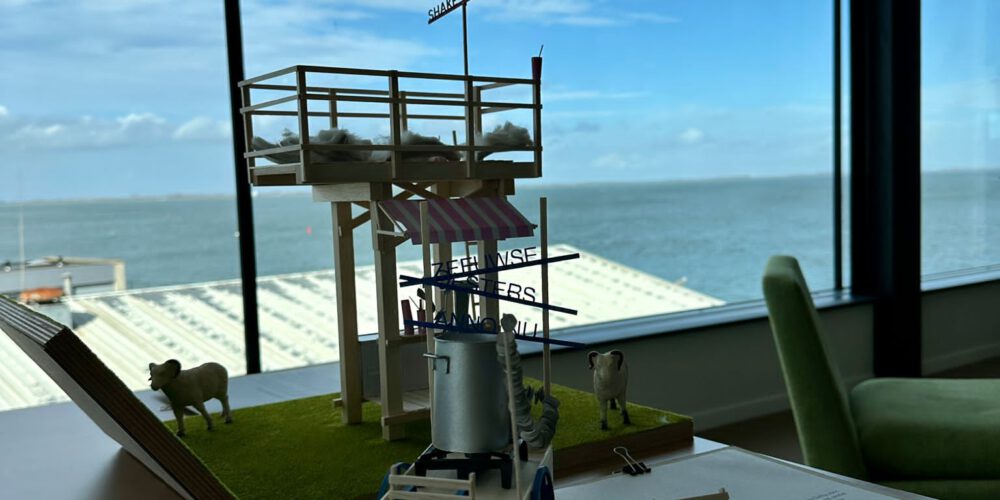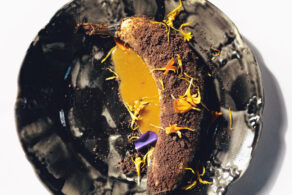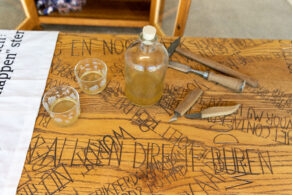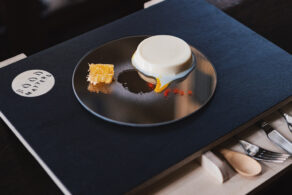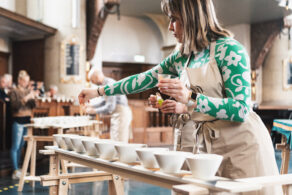Gepubliceerd op 30-06-2023
Future regional products within Schelde Delta region.
Drinking milkshakes for stronger dikes, connecting asparagus to elderly care; these are just a few scenarios from the design research within the Schelde Delta region.
How can we develop dynamic regional products within a landscape that is constantly changing? In the Schelde Delta, change is a constant. This tidal landscape holds water and land, sand and clay, fresh and salt water. Recently even more change is happening, as climate change is shaking up ecosystems. Human influence on the landscape is greater than ever.
Design studio Foodcurators performed a design research on the possibilities of new, meaningful regional products.
This project was made possible by the Province of Zeeland (Samen in Zee culture grant) and was done in collaboration with Erfgoed Zeeland.
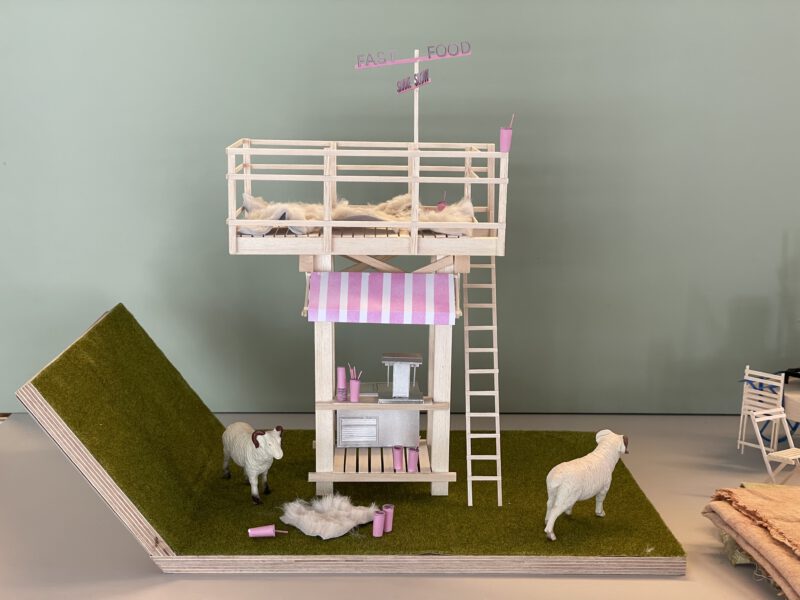
Fast Food Shake Slow
Fast Food Shake Slow
The original sheep’s species Zeeuws Melkschaap were kept for centuries in the Schelde Delta region because of their milk and wool, but also because they could graze on slopes. This meant they could graze on the dikes, and with their feet they tamped the soil, reinforcing the dikes.
How much higher the dikes need to be, that is to be debated. But that the water is coming is clear for all. By re-interpreting a typical fast food product (milkshake) with specific local ingredients a new business model for sheep rearers can be created. The raised dikes can be part of agricultural land, as it can be used for the sheep. Since the Zeeuws Melkschaap sheep species is severely endangered (only 1000 animals remain), this can be a model to bring back the original sheep in the landscape.
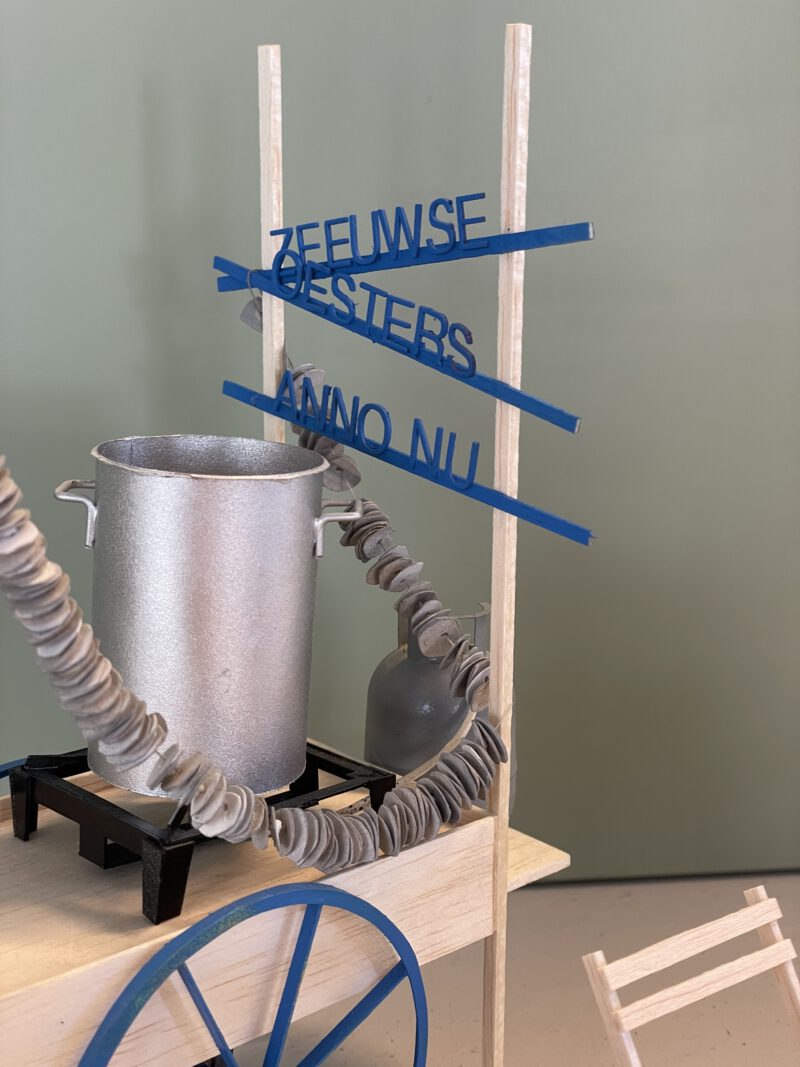
New oysters
New oysters
Originally, Platte Oesters were the type of oyster that was found in Schelde Delta region. By the 1970’s another type of outer was inported: Creuse. Creuses could be bred more easily, as a parasite had killed nearly all Platte oysters. Today, most of the famous Zeeland’s oysters are indeed Creuses.
Unfortunately, a new parasite has emerged in the waters of the Schelde Delta region. The Oyster Drill is a small sea slug that drills a hole in the shells of young oysters, infecting them and killing them. Breeding oysters has thus become a problem. However, the Oyster Drill is edible itself a bit reminiscent of another typical sea slug that is widely eaten in Schelde Delta (Alikruik, or Periwinkle) Could we restore a balance in the ecosystem by actively fishing Oyster Drills and serving them as a new local delicacy?
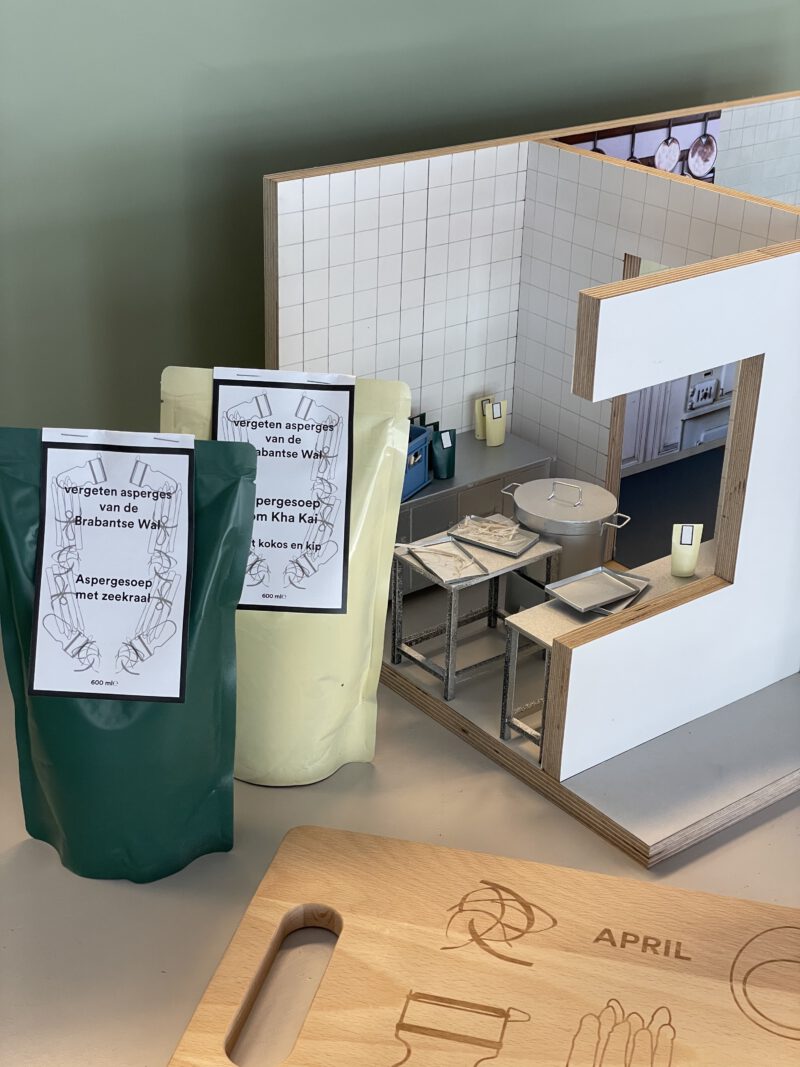
Hospice for asparagus
Hospice for asparagus
The asparagus that grow in Brabantse Wal area are special. They are a bit salty in flavour, very refined in taste. For many centuries asparagus has been grown here. Nowadays, this seasonal vegetable does not yet appeal widely to younger consumers. They think it is laborious to prepare and it does not really fit in the kind of dishes they like to eat. Classic asparagus with ham and boiled potatoes are not for them, they are much more familiar with world cuisines.
Instead of launching a marketing campaign aimed at young consumers, trying to convince them to eat asparagus, could we let this heritage die out gracefully instead? Which knowledge, crafts or other elements connected to this special kind of asparagus would we want to preserve?
By connecting this kind of asparagus to an elderly home, we can work around the fact that it is so laborious to prepare. Instead, the elderly themselves can prepare the asparagus, as part of therapy. Taste and smell are key triggers for the memory and even when people suffer from dementia they can access parts of their memory when sensorial stimulation though taste and smell is introduced. This way, we bring the asparagus to the people that find it meaningful. We accept the fact that heritage, as life itself, is ever-changing and ever-evolving. We can embrace the death of heritage with the same grace we accept human death.

